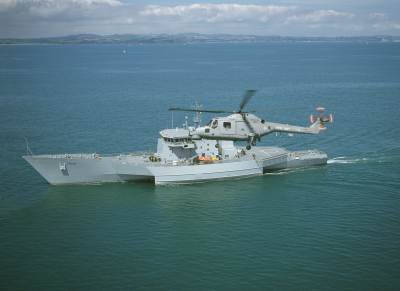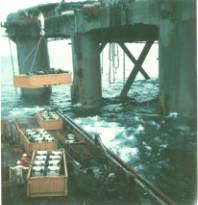|










| |
Where
did DSWP come from?
The
genesis of the new discipline of DSWP came from two main areas;
Several
other launch and retrieve roles at sea, including air-sea rescue and handling
towed arrays, would also benefit from foreknowledge of the quieter periods of
ship motion, even in large seas, that can be provided by the ability to deterministically predict the sea surface. It
should be re-stated that this is totally different from traditional statistical
sea-state assessment.
|
Automated
aircraft landing on ships

The Royal Navy have initiated a forward
programme aimed at the fully automatic landing of helicopters, such as Lynx,
onto moving frigates in as wide a range of sea states as possible. The time
considered necessary from hover to landing is a minimum of 20 seconds. The
Navy recognises that, to achieve this with low risk under moderate to large
sea conditions, it is required to predict the response of the vessel to waves.
This needs advanced knowledge of the shape of the waves arriving at the vessel
up to a minimum of 20 seconds ahead in time. At present only statistical
sea-state descriptions of the local sea surface are available and these do not
allow such deterministic prediction.
|
|
Offshore
Oil and Gas Operations.
Offshore
oil and gas operations have progressively moved into deeper regions with ever
more extreme sea conditions, typified by those prevailing in the new fields
west of the Shetlands. This has increasingly restricted the safe operating
windows increasing the costs of many tasks in all phases of Oil and Gas
exploitation life-cycle.
|
|
 |
For
example:
 |
handling
towed seismic arrays during exploration. |
 |
construction,
maintenance and supply tasks during the well deployment and production
phases such as; |
(a)
operating submersibles from support vessels
(b)
the loading/off loading of supply vessels onto rigs
(c)
oil transfer to SPSO's/shuttle tankers.
 |
marine
engineering operations during de-commissioning. |
|
|
In
all the above tasks, operational windows could be considerably widened,
costs reduced and safety and environmental impact improved, if it were
possible to exploit the short calm periods that exist in even very large
seas. Achieving this requires prediction of the actual shape of the sea
surface several tens of seconds ahead in time, i.e., deterministic
prediction. Systems which estimate conventional directional wave
statistics do not fulfil this role.
|
 
|
